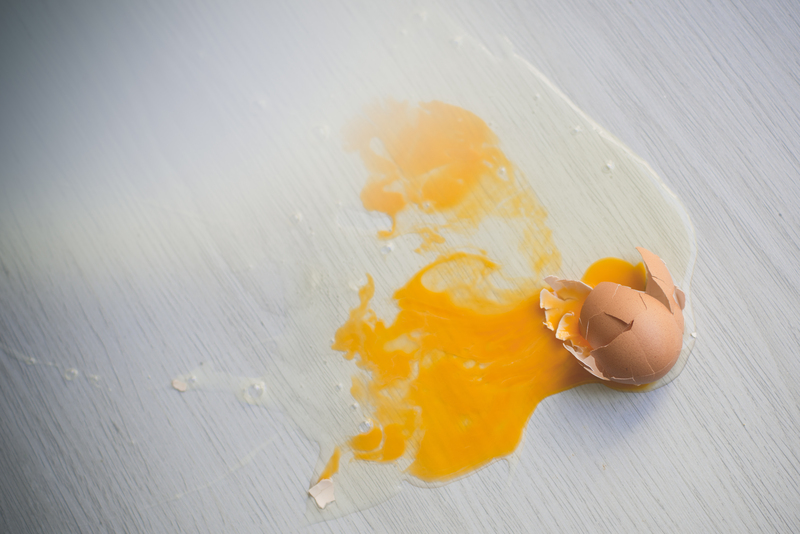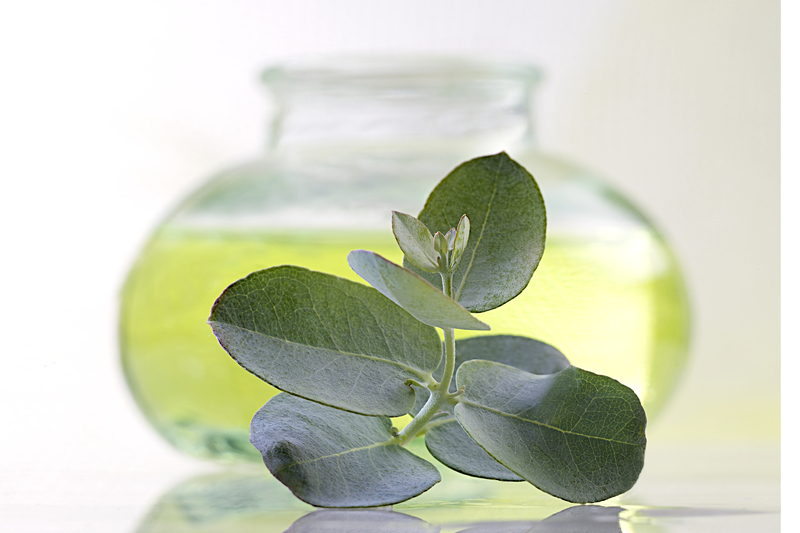Refreshing Techniques to Neutralize Moldy Odors
Posted on 16/06/2025
Refreshing Techniques to Neutralize Moldy Odors: A Complete Guide
Are you struggling to eliminate persistent, musty smells from your home, laundry, basement, or car? Moldy odors are not just unpleasant; they can also point to underlying moisture problems and potential health risks. Luckily, there are a variety of refreshing techniques to neutralize moldy odors and restore fresh air to any space. This comprehensive article explores proven methods, from natural remedies to advanced solutions, so you can banish those damp, mildewy smells for good.

Understanding Moldy Odors: Why Do They Happen?
Mold and mildew thrive in damp, poorly-ventilated, or humid areas. The musty, earthy odor associated with mold is caused by microbial volatile organic compounds (MVOCs) released as fungi break down organic material. These moldy odors not only make spaces uncomfortable, but they also signal that air quality may be compromised.
Common Places Moldy Odors Occur
- Basements and cellars
- Bathrooms without adequate ventilation
- Kitchens and laundry rooms
- Old upholstered furniture, carpets, and curtains
- Cars with leaky windows or AC systems
- Closets and storage areas
Eliminating the odor involves not just masking it, but tackling both the smell and the source. Let's dive into effective ways to remove and neutralize moldy odors.
1. Locate and Address the Source
The most important step is finding and removing the root cause of the musty odor. Mold and mildew cannot be conquered without eliminating the source of moisture.
How to start:
- Inspect for leaks. Check under sinks, around windows, roofs, or in basements for water intrusion.
- Check for condensation. Windows, pipes, and HVAC systems often harbor hidden moisture.
- Look for visible mold or mildew. Musty smells usually point to hidden colonies on drywall, wood, under carpeting, or inside vents.
Tip: Addressing moisture is essential--no matter how much deodorizer you use, odors will return without tackling the source!
2. Ventilate and Dry the Area
Proper ventilation is key to discouraging mold growth and dispersing musty odors. Whenever you notice moldy scents:
- Open windows and doors to allow fresh air flow.
- Use dehumidifiers to maintain relative humidity below 60%.
- Fans and HVAC systems can help circulate and dry damp areas.
- After cleaning, let surfaces air dry completely before closing windows again.
Pro-tip: In high-humidity climates, run a dehumidifier regularly in problem rooms like basements.
3. Deep Clean and Disinfect Surfaces
Mold spores cling to every surface, furniture, and fabric within an affected area. To truly neutralize musty odors, a comprehensive cleaning is in order:
- Hard surfaces: Scrub walls, tiles, and floors with a mix of warm water and dish soap. For persistent growth, add a small amount of bleach (1 cup bleach to 1 gallon of water). Never mix bleach with ammonia or other cleaners!
- Soft surfaces: Wash curtains, cushion covers, and slipcovers in hot water with detergent and a cup of white vinegar. Steam clean carpets and upholstery if possible.
- HVAC vents and filters: Mold in air ducts needs professional cleaning or replacement of filters.
Don't forget behind and underneath furniture! Mold loves hidden, undisturbed places.
4. Natural Remedies to Neutralize Moldy Odors
Sometimes, commercial air fresheners only mask odors, while natural deodorizers can actually absorb and remove them. Try these:
Baking Soda
- Sprinkle baking soda on carpets, rugs, or upholstery. Let sit overnight, then vacuum.
- Place open boxes or bowls of baking soda in closed cupboards, closets, or fridges to absorb persistent smells.
White Vinegar
- Set out bowls of white vinegar to naturally neutralize airborne moldy odors.
- Mix equal parts water and vinegar in a spray bottle and mist affected surfaces. Leave to air dry.
Activated Charcoal
- Put small bags of activated charcoal in musty corners or inside shoes, gym bags, and storage spaces. They absorb smells without adding scent.
Coffee Grounds
- After brewing, dry spent coffee grounds and place them in bowls around the area. Coffee naturally removes bad odors.
Citrus Peels
- Add a fresh aroma by placing lemon or orange peels in smelly spots. Citrus oils help counteract moldy fragrances.
5. Use Specialized Odor Neutralizing Products
Some potent cases demand more than home remedies. Here's when to try specialty mold odor neutralizers:
- Enzymatic cleaners: These break down mold spores and neutralize odors at a molecular level. Use as directed on hard and soft surfaces.
- Odor absorber gels: Commercial gels containing activated charcoal or citrus oils are marketed for soaking up strong, lingering musty odors.
- Ozone generators: Used cautiously, these can neutralize odors in unoccupied rooms. Professional assistance is recommended due to potential health risks.
Always follow instructions exactly and ensure good ventilation when using chemical products.
6. Prevent Recurrence: Long-Term Mold and Odor Solutions
Control Humidity
- Keep indoor humidity below 60%, ideally around 40-50%.
- Use dehumidifiers in damp basements and bathrooms.
- Check and repair roof, window, or plumbing leaks promptly.
Boost Air Flow
- Install exhaust fans in bathrooms and kitchens.
- Regularly open doors and windows for a few hours on dry days.
- Move furniture away from walls to encourage circulation.
Inspect and Maintain
- Every few months, inspect potential trouble spots (crawlspaces, behind appliances, under sinks).
- Replace HVAC filters regularly.
- Store fabrics, suitcases, and seasonal gear in dry, ventilated places.
By keeping spaces clean, dry, and well-aired, you can stop moldy odors from returning!
7. Laundry Tricks for Moldy Odors in Clothes and Fabrics
Have you ever pulled clean clothes from the washing machine only to be hit by a musty odor? Mold and mildew can thrive in damp laundry, especially if left for hours in the washer.
- Rewash smelly items in hot water with a cup of white vinegar or baking soda. Both act as natural deodorizers.
- To kill stubborn mold, add half a cup of borax or oxygen bleach to the wash.
- Dry clothes thoroughly in sunlight, which has natural mold-killing properties. If air-drying indoors, use a fan or dehumidifier.
For persistent odors, soak fabrics in a solution of water and vinegar (1:4) before washing.
8. Car and Vehicle Mold Odor Removal
Cars are also vulnerable to musty mold odors, especially after flooding or if moisture seeps in through leaky seals.
- Remove floor mats and let them air out in the sun.
- Clean upholstery with a solution of 1 part white vinegar and 2 parts water. Pat dry and ventilate thoroughly.
- Baking soda can be sprinkled on carpets to absorb embedded odors--vacuum after several hours.
- For air vents: Replace or clean cabin air filters. Run the AC on recirculate with a deodorizing spray designed for auto use.
- If water leakage is persistent, have seals and window gaskets checked by a professional.

9. When to Call a Professional
Though many DIY odor neutralizing techniques can resolve mild to moderate problems, there are situations best left to experts:
- Mold growth covering an area larger than 10 square feet
- Persistent health issues like allergies, asthma, or headaches
- Odors that linger even after repeated cleaning and ventilation
- Extensive water damage, sewage backups, or contaminated HVAC systems
Professional mold remediators use advanced equipment and cleaning solutions to fully eradicate both spores and odors.
Final Thoughts: Enjoy a Fresh, Mold-Free Environment
Neutralizing moldy odors doesn't have to mean endless frustration. By combining these refreshing techniques to neutralize moldy odors--from attacking moisture and ventilation issues to using natural and commercial deodorizing solutions--you can restore fresh, clean air to every corner of your home, office, or vehicle. Remember, a proactive approach and regular upkeep are your best defense against mildew and musty smells.
- Investigate the cause: Moisture is mold's best friend.
- Ventilate vigorously: Let fresh air work its magic.
- Deep clean, dry, and repeat: Surfaces, fabrics, and ventilation systems need routine attention.
- Deploy deodorizers: Use baking soda, vinegar, charcoal, and commercial products as needed.
- Stay vigilant: Regularly check for leaks, condensation, and lingering odors.
Embrace these mold odor neutralization methods to keep your indoor spaces not only pleasant smelling but also safe and healthy!





